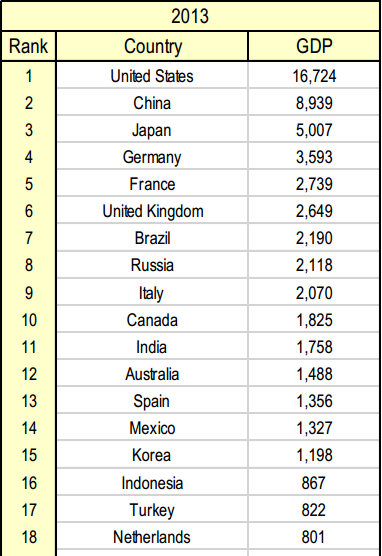Click here to read this mailing online.
Here are the latest updates for jorgeus.george@gmail.com
 "Next Big Future" - 2 new articles
"Next Big Future" - 2 new articles
- Income stagnation and unmeasured increases in information and entertainment
- CEBR makes GDP predictions out to 2028
- More Recent Articles
- Search Next Big Future
- Prior Mailing Archive
Income stagnation and unmeasured increases in information and entertainmentVirginia Postrel writes about the changes over the last ten years in the availability of customized entertainment. She notes that much of these gains do not show up in GDP statistics. It is a form of progress that large numbers of people experience every day, the increase in entertainment variety and convenience represents a challenge to the increasingly conventional wisdom that American living standards have stagnated, at least for the middle class.
Entertainment is so cheap, the enjoyment people derive from having a better chance of finding exactly what they want, when and where they want it, doesn’t count for much. Giving consumers new features for little or no additional money increases well-being but doesn’t do much for productivity statistics.
To measure how changing entertainment options have affected real living standards, what we’d need to know is how much money you’d have to pay each person to make them just indifferent between the entertainment they consume today and the entertainment they could have consumed in the past. What people shell out today for, say, cable TV or Netflix subscriptions is almost certainly a small fraction of that total value -- yet it’s the only value official statistics pick up. The result is most likely a significant underestimate of improvements in economic well-being. Consider a different hard-to-measure change: the increasing variety of imported goods. In a 2004 article, the economists David E. Weinstein and Christian Broda estimated that consumers would be willing to pay $280 billion a year -- about 3 percent of gross domestic product -- just to have access to the variety of foreign goods that were available in 2001 versus 1972. That’s a big number. Read more » CEBR makes GDP predictions out to 2028The economic consultancy Cebr (Centre for Economics and Business Research) released its annual report The World Economic League Table. The report gives an end of year report on GDP in the 30 largest economies in the world. It also forecasts which countries will be in the ‘Top Thirty’ for 5, 10 and 15 years ahead.
This year’s report is updated to take account of the likely surplus of energy and falling oil and gas prices in the 2020s, weaker commodity prices than had previously been expected and the sell-off of some emerging market currencies in mid-2013.
Nextbigfuture disagrees with the CEBR and believes that China's currency will appreciate more quickly so that China will pass the US economy on a nominal exchange basis by 2020. The CEBR is predicting a very strong US dollar. They are predicting for the US to vastly strengthen against Germany and most other countries. The key points of this year’s report are: * Our latest forecasts now show China overtaking the US in 2028 to become the world’s largest economy. This is later than some analysts have suggested and reflects the continuing performance of the US as the West’s strongest economy and the slowing down of the Chinese economy. * India overtakes Japan in 2028 to become the world’s third largest economy. Abenomics means that Japan is likely to follow a weak currency policy for the foreseeable future which means that its GDP in dollar terms gets overtaken by India earlier than we had previously expected. Read more » More Recent Articles
|

